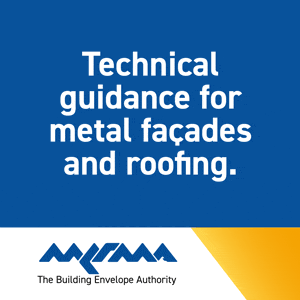Keep up with colour trends
- Specify & Build
- May 27
- 3 min read
The colour and texture of a façade determines how a building looks. It communicates purpose and identity, influences people’s perception of the building and, often, the businesses and individuals within. John Park-Davies, Group Managing Director of Vertik-Al, explores some of the recent building façade colour trends.
Colour is used to boost aesthetic appeal, evoke emotions, and blend or contrast a building with its surroundings. To achieve this in the long term, colourfastness and durability are crucial. For optimum performance, many façade designers opt for a powder-coated finish, especially when working with architectural aluminium, such as cladding and curtain walling.
As a large, UK independent powder coater of architectural aluminium, we powder coat aluminium bar length and items for many industries and applications, which directly influences the powders we use.

Neutrals dominate
Each year we conduct a colour audit, which gives us valuable insight into current and future colour trends. Last year we applied thousands of different shades, textures and finishes, but overall usage was dominated by neutrals and greys. In fact, neutral colours account for 11 of our top 20 most-applied powders.
Those who follow our journey will know that Anthracite Grey in a matt finish has been a firm favourite for several years now, and there was no change in 2024. With universal appeal, RAL 7016 was the most popular powder colour.
However, black and white powders were also used commonly during 2024. Jet Black and HIPCA White sit behind Anthracite Grey as our second and third most used powders, respectively. Other high-ranking neutrals include Signal White, Pure White, Signal Black and Traffic White. HIPCA White is also the only top 20 powder to feature in both matt and gloss finishes.
These tones have been slowly regaining ground over the past couple of years. While we apply vast quantities of Anthracite Grey, combined, black and white hues are used most consistently. This is likely due to their broad appeal and ability to contrast or enhance other architectural details.

Warm greys
Most evident last year, perhaps, was the greater use of warm greys. Khaki Grey, Moss Grey, Silk Grey and Pebble Grey all rank in our top 20 most-used powder colours. Unlike the perennially popular Anthracite Grey, Basalt Grey, Slate Grey and Black Grey, these greys are much softer. Warm and calming, they are enriched by natural light, making them ideal for cladding and facades. Their increased use suggests the cool grey trend may even be in decline.
Super-durables
As well as retaining the top spot, Anthracite Grey also featured in 16th position, but this time in an ultra-durable powder coating - Interpon D2525 Matt. This is a series of powder coatings with exceptional weather resistance, offering outstanding gloss retention, resistance to colour change, and maximum film integrity. They are Qualicoat Class 2 certified and GSB approved.
Qualicoat Class 2 powders are better known as super-durables. Developed in the 1990s, super durables now boast a track record exceeding 30 years in the field and, with greater awareness and demand for long-lasting performance, their use is growing steadily. We have decades of coating experience using super-durables and, as a result, we offer extended warranties on Class 2 powders.
Our most popular colours aside, we have also been using smaller quantities of more interesting colours and finishes, such as metallics, anti-graffiti and non-slip.
We know that metallic effect powders in Anodic Bronze and Anodic Steel Bronze are already popular with designers, but last year we added another to the list – Anodic Champagne. Just like the shift from cool to warm grey tones, this metallic is far warmer than either Anodic Bronze or Anodic Steel Bronze. We also received a request to colour match one of Farrow & Ball’s Traditional Neutrals – No.4 Old White.
























































.png)

